#Nano Fertilizers
Explore tagged Tumblr posts
Text
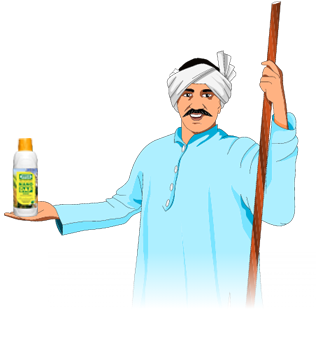
IFFCO Nano Dap Liquid Price, Urea Fertilizer | IFFCO Nano Dap
Checkout IFFCO Nano Dap Liquid price, time & method of application, safety precautions, general instructions & product specifications related to IFFCO Nano Dap fertilizer (liquid). For more - nano fertilizers
0 notes
Text

How To Fertilize Indoor Plants With Liquid Fertilizer
Fertilizers are similar to multi-vitamins for indoor plants that promote healthy growth in plants. They are used to replace essential nutrients that plant potting mixes lose as they grow over time. For more - nano fertilizers
0 notes
Text
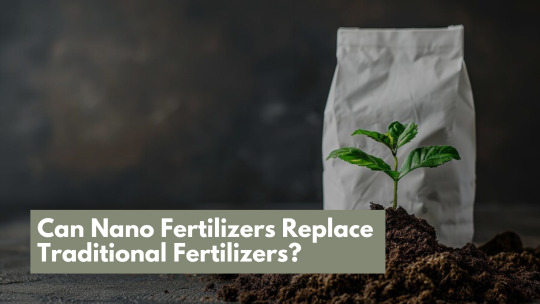
Nano fertilizers, utilizing nanotechnology, offer precise nutrient delivery, reduced environmental impact, and customized formulations tailored to specific crops and soil types. They enhance nutrient uptake by plants, minimize nutrient runoff, and promote sustainable agriculture. In contrast, traditional fertilizers lack precision in nutrient delivery, leading to inefficiencies, environmental pollution, and soil degradation. While nano fertilizers face challenges such as cost and regulatory concerns, their potential to revolutionize agriculture makes them a promising alternative to traditional fertilizers.
#Nano Fertilizers Vs Traditional Fertilizers#Can Nano Fertilizers Replace Traditional Fertilizers#Nano Fertilizers#Traditional Fertilizers
0 notes
Text
Nano Fertilizer Market Strategies, Environmental Impact, and Sustainable Agricultural Practices
The global nano fertilizer market size is expected to reach USD 9,377.3 million by 2030, as per the new report by Grand View Research, Inc. The market is expected to grow at a robust CAGR of 14.8% from 2022 to 2030. The industry growth is primarily driven by increasing demand for better crop yields due to a significant rise in the global population and limited availability of key resources like land.
Nano Fertilizer Market Report Highlights
The global market is estimated to advance at a CAGR of 14.8% from 2022 to 2030. This is attributed to the rising demand for food crops due to the increasing population thus creating the need for using high-yield nano fertilizers
North America dominated the global market in 2021 with a revenue share of over 34%. This is owed to advancement in agriculture in developed countries such as Canada and the U.S.
Favorable policies along with technological advancements in the agricultural sector helped make the U.S., the largest consumer of nano fertilizer
Nitrogen emerged as a major raw material used for the production of nano fertilizer in 2021, with a revenue share of over 25%. Easy and cheap availability of Nitrogen makes it the topmost preference among consumers
Soil method of application captured the largest market share of over 70% in 2021. This growth is attributed to the capability of nano fertilizers to release nutrients in the soil, thus, enabling better penetration into the roots of the crops
Cereals & grains are the largest application segment in terms of revenue. It contributed over 40% to the global revenue share. The growth of this segment can be attributed to the fact that it is the major source of iron, dietary proteins, vitamins, and dietary fibers required by the human body. Thus, to fulfill the growing demand for cereals & grains continues to push food growers to purchase nano fertilizers in rising quantities
For More Details or Sample Copy please visit link @: Nano Fertilizer Market Report
Growing focus on increasing the quantity of yield has led to the indiscriminate use of fertilizers in agriculture. This can result in both environmental and agricultural catastrophes by degrading the quality of the soil. According to a report by Food and Agricultural Organization (FAO), natural resources such as water and arable land are on the verge of exhaustion. Furthermore, degradation at a high rate continues due to intensive urbanization and excessive use of chemical fertilizers. Thus, the declining nutritional quality of food and degraded quality of soil continues to drive a gradual shift toward nanotechnology in agriculture. Nano fertilizers remains an ideal prospect to maintain the quality of soil while meeting production target.
The use of nano fertilizers can help in reducing chemical fertilizer consumption by 80 to 100 times, thus reducing the reliance on chemical fertilizers. For instance, the demand for nano urea is increasing worldwide as it has the ability to replace regular urea usage at a relatively lower cost while offering high yields to crops. By 2023 nano urea is expected to replace the usage of 13.7 million tons of conventional urea. Thus, the huge demand for nano fertilizer from the agriculture industry along with supportive government policies continues to promote newer and more efficient agriculture techniques.
The importance of policy framework remains paramount to promote sustainable growth, and such framework is already in place for nano fertilizers in key regions. For instance, U.S department of agriculture in 2020 announced to make USD 250 million investment through its new grant program. This initiative was taken to support new innovative and more efficient fertilizer production in the region. Additionally, USDA seeks growth in competition as it aims to allay concerns regarding supply chain. With its new initiatives, the USDA continues to introduce more transparency for consumers to make them aware of the safety of agriculture produce. These initiatives aimed at gauging the use of fertilizers, seeds, retail markets, continue to generate momentum for the eco-friendly and high-yield promising nano fertilizers.
#Nano Fertilizers#Crop Nutrition#Agritech#Fertilizer Technology#Smart Farming#Green Revolution#Agribusiness#Crop Yield Enhancement#Environmental Sustainability#Global Food Security#Nano-technology In Agriculture#Agro-chemicals#Farming Solutions#Future Of Farming#Nutrient Management#Crop Productivity#Nano-Agri Solutions#Agri Tech Trends#Agro Economics#Modern Agriculture#Agri Research#Tech In Farming#Agricultural Science#Eco-Friendly Fertilizers
1 note
·
View note
Text
Precision Agriculture Fuels Growth in the Nano Fertilizer Market
Advancements in Precision Agriculture and Demand for Enhanced Nutrient Efficiency Drive Growth in the Nano Fertilizer Market.

The Nano Fertilizer Market Size was valued at USD 3.6 billion in 2023, and is expected to reach USD 12.0 billion by 2032, and grow at a CAGR of 14.5% over the forecast period 2024-2032.
The Nano Fertilizer Market is witnessing significant growth due to its revolutionary impact on modern agriculture. Nano fertilizers are engineered materials designed to deliver nutrients to plants more efficiently than conventional fertilizers. These advanced formulations enhance nutrient uptake, reduce environmental losses, and improve crop yield and quality. As global agriculture shifts toward sustainable and precision farming methods, nano fertilizers are emerging as a key solution to address soil health, reduce input costs, and meet the increasing food demand.
Key Players:
The major key players are JU Agri Sciences Pvt. Ltd., Indian Farmers Fertiliser Co. Ltd., Lazuriton Nano Biotechnology Co. Ltd., Geolife Group, s.r.o., Shan Maw Myae Trading Co. Ltd., Fanavar Nano-Pazhoohesh Markazi Company, Tropical Agrosystem India (P) Ltd., EuroChem, AG CHEMI Group, s.r.o. and other key players mentioned in the final report.
Future Scope & Emerging Trends:
The future of the nano fertilizer market is strongly aligned with the broader push for sustainable agriculture and resource efficiency. Government initiatives and research support are encouraging the adoption of nano-enabled agricultural inputs, particularly in developing economies where nutrient management and soil degradation are key concerns. Emerging trends include the integration of nanotechnology with smart farming, using drones and sensors to apply precise doses of fertilizers. Additionally, the shift toward organic and bio-based nano fertilizers is gaining momentum, driven by environmental regulations and consumer preference for chemical-free produce.
Key Points:
Nano fertilizers offer higher nutrient use efficiency compared to traditional fertilizers.
They help reduce soil and water pollution through controlled nutrient release.
Rising demand for precision farming and yield optimization is fueling market adoption.
Governments and institutions are supporting research and subsidies for nano-agriculture.
Increasing focus on climate-smart and low-input farming systems.
Conclusion:
The nano fertilizer market is set to redefine the agricultural input landscape by offering efficient, eco-friendly, and cost-effective alternatives to traditional fertilizers. With ongoing innovation, government backing, and growing environmental consciousness, nano fertilizers are poised to play a pivotal role in enhancing global food security while preserving natural resources. The market's expansion reflects a broader agricultural revolution—one that is data-driven, sustainable, and future-ready.
Read Full Report: https://www.snsinsider.com/reports/nano-fertilizer-market-3571
Contact Us:
Jagney Dave — Vice President of Client Engagement
Phone: +1–315 636 4242 (US) | +44- 20 3290 5010 (UK)
#Nano Fertilizer Market#Nano Fertilizer Market Size#Nano Fertilizer Market Share#Nano Fertilizer Market Report#Nano Fertilizer Market Forecast
0 notes
Text
Galar Fertilizers and Chemicals Pioneering Nano-Tech Revolution in Agriculture

Galar Fertilizers and Chemicals is leading the transformation of the agricultural industry through its cutting-edge nano-technology solutions. With a commitment to sustainability, efficiency, and enhanced crop yields, the company has emerged as a key innovator in the Indian farming sector.
Founded with the vision of integrating advanced scientific methodologies with traditional farming practices, Galar Fertilizers and Chemicals has introduced revolutionary products such as nano urea, nano DAP, and bio-potash. These innovations are designed to optimize nutrient absorption, reduce chemical dependency, and promote eco-friendly farming.
Revolutionizing Agriculture with Nano-Technology
The company specializes in nano-fertilizers, which provide plants with essential nutrients in a more efficient and precise manner. Unlike conventional fertilizers, these nano-formulations allow for better nutrient penetration, leading to higher crop yields with minimal environmental impact. Farmers using Galar’s products report increased productivity, reduced fertilizer costs, and improved soil health.
“Our goal is to empower farmers with solutions that maximize yield while ensuring sustainability. Nano-technology is the future of agriculture, and we are proud to be at the forefront of this transformation,” says Ajay Galar, Director of Galar Fertilizers and Chemicals.
Sustainable & Cost-Effective Solutions
Galar Fertilizers and Chemicals is committed to sustainability, offering products that reduce chemical runoff, preserve soil fertility, and support organic farming. The company’s research-driven approach ensures that every product is developed with a focus on environmental responsibility and farmer profitability. Their organic-inorganic hybrid formulations provide effective pest and nutrient management while maintaining soil integrity.
In addition to its innovative products, the company actively educates farmers about advanced agricultural practices. Through workshops, demonstrations, and collaborations with agricultural institutions, Galar Fertilizers and Chemicals ensures that modern solutions are accessible to all farmers.
Expanding Global Reach
With a strong presence in India, the company is now gearing up to expand its operations globally. Plans for an export wing are in progress, which will make their nano-fertilizers and eco-friendly agricultural solutions available worldwide. The international recognition of their patented technology further strengthens their position as a leader in the industry.
A Vision for the Future
Under the leadership of Ajay Galar, Ajay Kumar Galar, Subodh Galar, and Nujhat Bano, the company continues to push the boundaries of agricultural innovation. Their unwavering focus on research, technology, and farmer welfare has earned them a reputation for excellence.
With a mission to revolutionize farming through cutting-edge technology, Galar Fertilizers and Chemicals is paving the way for a more sustainable, productive, and profitable agricultural future. For more information visit here https://nujaypharma.com/
0 notes
Text
सावधान! नैनो-यूरिया के इस्तेमाल से पैदावार में गिरावट, पंजाब एग्रीकल्चर यूनिवर्सिटी ने अध्ययन में किया खुलासा
Nano Urea Reduced Grain Yield: पंजाब एग्रीकल्चर यूनिवर्सिटी (PAU) के शोधकर्ताओं ने हाल ही में नैनो-यूरिया के फसल उत्पादन पर प्रभाव का विश्लेषण किया है। इस अध्ययन में पाया गया कि नैनो-यूरिया के लगातार इस्तेमाल से धान और गेहूं की पैदावार में कमी आ सकती है। यह निष्कर्ष चिंताजनक है, क्योंकि धान और गेहूं भारत के कुल खाद्यान्न उत्पादन का लगभग 70% हिस्सा हैं। नैनो-यूरिया के प्रभाव:शोधकर्ताओं के अनुसार,…
0 notes
Text
Fertilisers Trends 2025
The fertiliser industry is like fashion, and I believe that in 2025 we shall see both old and new trends. While some trends are a continuation of past efforts, others are setting the stage for significant change. Here’s what’s catching my attention:
1. Sustainability takes centre stage It’s no surprise that the drive for eco-friendly solutions is gaining traction. From organic options to bio-based fertilisers, the industry is leaning towards practices that promote soil health while reducing environmental footprints. This shift isn’t just a trend; it’s becoming the norm as sustainable agriculture continues to grow in importance.
2. Technology on the rise Nanotechnology in fertilisers? You know my scepticism about the word “nano,” but I can’t ignore the fact that the world will be referring to it more and more often.
3. Market growth, with Asia leading the charge With the global fertiliser market expected to hit $312 billion by 2032, growth is on the horizon. The Asia-Pacific region is at the heart of this expansion, thanks to booming agricultural activity and supportive policies. This region is definitely setting the pace.
4. Supply chains under the microscope Geopolitical tensions have exposed just how fragile global supply chains can be. The good news? Companies are diversifying sources and boosting local production to weather disruptions. A good example: potash supply is bouncing back as producers adapt to new realities.
5. Regulations shaping the future Policy is playing an increasingly active role in steering the industry. For instance, the U.S. has allocated serious funding-$36 million, to be exact-towards reducing emissions from synthetic nitrogen fertilisers. Well, they did before Mr. Trump was elected again. But to me, it’s a clear sign that governments are prioritising sustainability alongside productivity.
As these trends unfold, one thing is clear: the fertiliser industry sits at the intersection of food security and environmental stewardship. The question is, how will stakeholders adapt to thrive in this evolving landscape?
#sustainability #fertilizers #fertilisers #fashion #technology #nano #imstory #trends #ecofriendly #market #potassium #potash

#agriculture#fertilizer#fertilization#urea#corn#usa#wheat#india#vessel#nola#nano#sustainability#potassium#imstory#fashion#trends#2025
1 note
·
View note
Text
ड्रोन टेक्नोलॉजी: खेतों की उपज बढ़ाने का नया युग, ड्रोन से होगी उर्वरकों की बौछार
किसानों को सशक्त और आधुनिक खेती से जोड़ने के लिए बिहार सरकार ने एक नई पहल की शुरुआत की है। राज्य के 38 जिलों में 53,400 एकड़ भूमि पर ड्रोन टेक्नोलॉजी के माध्यम से कीटनाशकों और उर्वरकों का छिड़काव किया जाएगा। यह कदम किसानों की लागत कम करने और कृषि कार्य को सरल बनाने की दिशा में एक बड़ा बदलाव है। ड्रोन से किन उर्वरकों का होगा छिड़काव? सरकार के इस प्रोजेक्ट के तहत निम्नलिखित उर्वरकों का छिड़काव…
#Benefits of Drone in Farming#Bihar Drone Fertilizer Spraying#Bihar Government Drone Initiative#Drone Technology#Drone Technology in Agriculture#Nano Urea Spraying with Drone
0 notes
Text
The nano fertilizers market is expected to grow at a strong CAGR of around 15% during the forecast period.
0 notes
Text
Liquid Nanoclay Technology: कैसे लिक्विड नैनोक्ले तकनीक रेतिली ज़मीन को बना रही उपजाऊ?
बंजर ज़मीन पर उगे रसीले फल
कृषि के क्षेत्र में हर दिन नए प्रयोग हो रहे हैं। इन्हीं प्रयोगों में से एक है नैनोक्ले तकनीक, जिसकी बदौलत रेगिस्तान में भी रसीले फल व सब्ज़ियां उगाई जा सकती हैं। इस तकनीक का सफल प्रयोग यूएई में हो चुका है।
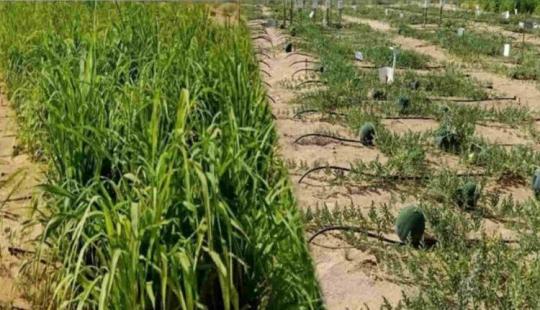
लिक्विड नैनोक्ले तकनीक (Liquid Nanoclay Technology): कृषि उपकरणों की मदद से किसानों का काम आसान करने से लेकर उपज बढ़ाने तक के लिए वैज्ञानिक हर दिन नई-नई तकनीक ईज़ाद करने में लगे हुए हैं। कोरोना काल में ऐसी ही की एक तकनीक का सफल प्रयोग यूएई की रेतिली ज़मीन पर किया गया। जिस तकनीक की बदौलत रेतिली भूमि को उपजाऊ बनाया गया उसका नाम है लिक्विड नैनोक्ले तकनीक।
कोरोना में लगे लॉकडाउन के दौरान ही यूएई में इसका इस्तेमाल करके एक बंजर भूमि पर 40 दिनों के अंदर रसीले तरबूज का उत्पादन किया गया। इस तकनीक की सफलता ने किसानों को उम्मीद की नई किरण दिखाई है। अब रेगिस्तानी इलाकों में किसान इस तकनीक को अपनाने की दिशा में आगे बढ़ रहे हैं। हालांकि, ये तकनीक थोड़ी महंगी है इसलिए छोटे किसानों के लिए इसका खर्च उठाना मुश्किल हो सकता है।
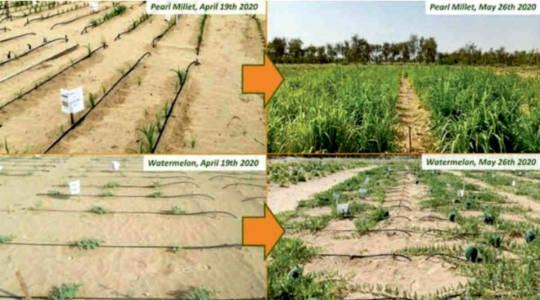
क्या है नैनोक्ले तकनीक (Nanoclay Technology)?
नैनोक्ले (Liquid) का मतलब है गीली चिकनी मिट्टी जिसे संतुलित मात्रा में रेत में मिलाकर मिट्टी को उपजाऊ बनाया जाता है।
और पढ़ें.....
0 notes
Text
https://nanodap.in/en/farmers-corner#TimeMethodofApplication
IFFCO Nano Dap Liquid Price, Urea Fertilizer | IFFCO Nano Dap
Checkout IFFCO Nano Dap Liquid price, time & method of application, safety precautions, general instructions & product specifications related to IFFCO Nano Dap fertilizer (liquid).
0 notes
Text
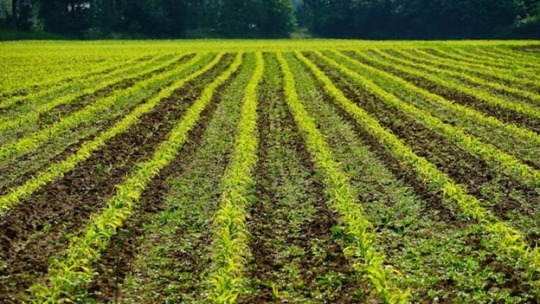
The Benefits of Cover Crops for Soil Health and Fertility
Healthy soil is not only required for the overall growth of a plant but also to maintain its health. For more - nano fertilizers
0 notes
Text
According to MarkNtel Advisors’ research report, “Asia-Pacific Nano Fertilizers Market Analysis, 2021,” the market is likely to grow at a CAGR of 17% during 2021-26F due to the increasing demand for nano fertilizers to reduce the use of chemical fertilizer urea by 50%. Surging advancements and R&D in nanotechnology have escalated the production of nanoparticles used in producing nano fertilizer formulations. Besides this, increasing water pollution, soil degradation, and biodiversity loss due to the burgeoning use of chemical fertilizers have also propelled the demand for nano fertilizer in the region.
0 notes
Text
Greening Agriculture with Nano Fertilizers: Market Insights and Prospects
The global nano fertilizer market size is expected to reach USD 9,377.3 million by 2030. The industry growth is primarily driven by increasing demand for better crop yields due to a significant rise in the global population and limited availability of key resources like land.
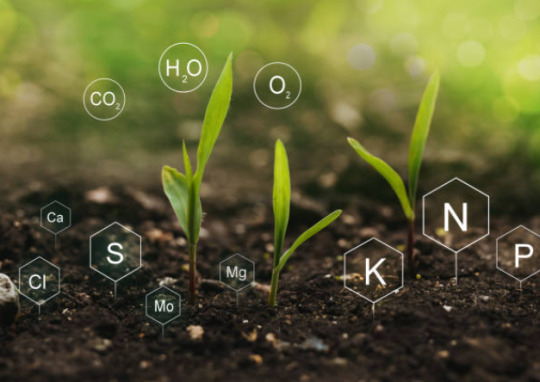
Gain deeper insights on the market and receive your free copy with TOC now @: Nano Fertilizer Market Report
Growing focus on increasing the quantity of yield has led to the indiscriminate use of fertilizers in agriculture. This can result in both environmental and agricultural catastrophes by degrading the quality of the soil. According to a report by Food and Agricultural Organization (FAO), natural resources such as water and arable land are on the verge of exhaustion. Furthermore, degradation at a high rate continues due to intensive urbanization and excessive use of chemical fertilizers. Thus, the declining nutritional quality of food and degraded quality of soil continues to drive a gradual shift toward nanotechnology in agriculture. Nano fertilizers remains an ideal prospect to maintain the quality of soil while meeting production target.
The use of nano fertilizers can help in reducing chemical fertilizer consumption by 80 to 100 times, thus reducing the reliance on chemical fertilizers. For instance, the demand for nano urea is increasing worldwide as it has the ability to replace regular urea usage at a relatively lower cost while offering high yields to crops. By 2023 nano urea is expected to replace the usage of 13.7 million tons of conventional urea. Thus, the huge demand for nano fertilizer from the agriculture industry along with supportive government policies continues to promote newer and more efficient agriculture techniques.
The importance of policy framework remains paramount to promote sustainable growth, and such framework is already in place for nano fertilizers in key regions. For instance, U.S department of agriculture in 2020 announced to make USD 250 million investment through its new grant program. This initiative was taken to support new innovative and more efficient fertilizer production in the region. Additionally, USDA seeks growth in competition as it aims to allay concerns regarding supply chain. With its new initiatives, the USDA continues to introduce more transparency for consumers to make them aware of the safety of agriculture produce. These initiatives aimed at gauging the use of fertilizers, seeds, retail markets, continue to generate momentum for the eco-friendly and high-yield promising nano fertilizers.
#Nano fertilizer Market#Nano Fertilizers#AgTech Innovation#Sustainable Agriculture#Crop Nutrition#Nano technology In Farming#Precision Fertilization#Green Agribusiness#Fertilizer Efficiency#Smart Agricultural Solutions#Agribiotech#Future Of Agriculture#EcoFriendly Fertilizers#Nanoparticle Nutrition
0 notes
Text
Nano Fertilizer Market Size, Share, and Industry Analysis
Rising Demand for Sustainable Agriculture and Enhanced Crop Productivity Drives Growth in the Nano Fertilizer Market.

The Nano Fertilizer Market Size was valued at USD 3.6 billion in 2023, and is expected to reach USD 12.0 billion by 2032, and grow at a CAGR of 14.5% over the forecast period 2024-2032.
The Nano Fertilizer Market is gaining traction as the agricultural industry seeks sustainable, high-efficiency solutions to enhance crop yield and soil health. Nano fertilizers utilize nanotechnology to deliver nutrients more effectively, reducing waste and improving plant absorption. With increasing concerns over soil degradation, excessive fertilizer use, and environmental impact, nano fertilizers present a viable alternative to traditional fertilizers. The market is expected to grow significantly due to rising global food demand, advancements in precision farming, and government initiatives promoting sustainable agriculture.
Key Players in the Nano Fertilizer Market
The major key players are JU Agri Sciences Pvt. Ltd., Indian Farmers Fertiliser Co. Ltd., Lazuriton Nano Biotechnology Co. Ltd., Geolife Group, s.r.o., Shan Maw Myae Trading Co. Ltd., Fanavar Nano-Pazhoohesh Markazi Company, Tropical Agrosystem India (P) Ltd., EuroChem, AG CHEMI Group, s.r.o. and other key players mentioned in the final report.
Future Scope of the Market
The Nano Fertilizer Market is projected to expand due to:
Increasing demand for sustainable and precision farming solutions.
Government initiatives supporting nanotechnology in agriculture.
Higher efficiency in nutrient delivery compared to conventional fertilizers.
Reduction in soil and water pollution caused by excess fertilizer runoff.
Growing adoption of smart agriculture techniques worldwide.
Emerging Trends in the Nano Fertilizer Market
With rising global food security concerns, the adoption of nano-based agricultural inputs is accelerating. Encapsulated nanofertilizers, which offer controlled release of nutrients, are becoming increasingly popular. These fertilizers enhance nutrient absorption, reduce soil leaching, and improve plant resilience to environmental stressors. Moreover, biodegradable nano fertilizers are gaining traction, addressing sustainability concerns and reducing chemical accumulation in ecosystems. In addition, smart nano fertilizers equipped with sensor-based release mechanisms are being developed to optimize nutrient uptake in real time.
Key Points:
Nano fertilizers improve nutrient absorption and reduce environmental impact.
Growing emphasis on precision farming and smart agriculture.
Encapsulated and biodegradable nano fertilizers are gaining popularity.
Government initiatives and research funding accelerating market growth.
Advancements in nanotechnology enhancing efficiency and sustainability.
Conclusion
The Nano Fertilizer Market is poised for substantial growth, driven by the need for high-efficiency, eco-friendly alternatives to traditional fertilizers. As farmers, researchers, and policymakers continue to explore sustainable agricultural solutions, nano fertilizers are emerging as a key innovation for boosting global food production while minimizing environmental harm. The market is expected to witness continued investment, technological advancements, and widespread adoption in the coming years.
Read Full Report: https://www.snsinsider.com/reports/nano-fertilizer-market-3571
Contact Us:
Jagney Dave — Vice President of Client Engagement
Phone: +1–315 636 4242 (US) | +44- 20 3290 5010 (UK)
#Nano Fertilizer Market#Nano Fertilizer Market Size#Nano Fertilizer Market Share#Nano Fertilizer Market Report#Nano Fertilizer Market Forecast
0 notes